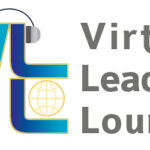Effective team coaching has to focus more on the distributed competencies in the collective
Depending on the industry, most companies experience what it means to operate in a [tooltip text=”Volatility-Uncertainty-Complexity-Ambiguity”]VUCA[/tooltip] driven market. In order to keep up with these dynamics and uncertainties organisations are changing in order to survive or strive.
Agile organisations are emerging
These days a lot is happening in organisations with regard to their ways of working and structures. With methods like scrum and design thinking, labelled as agile methods, companies expect to be more responsive to increasing dynamics in the marketplace.
Reading publications around agility one can basically identify two camps: One, whose members say it’s only hype and will disappear, hence, there is no need to change as traditional ways of working will remain effective. The others, who believe that these agile methods are here to stay and help companies to survive in a VUCA world.
I used to belong to the former! Yet, I have now seen many examples where agile methods have helped companies reviving their dwindling business. With my current understanding of agile approaches however, I cannot see companies going fully agile in their entire organisational structure. Nevertheless, functions or organisational units that are involved in innovation and product creation may be best placed to adopt an agile approach. To make these methods effective, structures in those functions or units have to change. Therefor a lot of organisational development activities focus on creating agile structures and introducing agile teams.

Agile teams are different
The design of these agile teams is very different from traditional hierarchical thinking. Even though a leader might be appointed, mainly for legal reasons, in daily practice everyone takes over a part of control over roles and responsibilities of the team, depending on the phase of the activity or project at hand. The distinction between the leader and member of a unit gets blurry, that means classical roles and competencies, like leadership or specialist, are distributed over several shoulders in such an agile context.
Every member needs leadership competencies
This means that leadership development and coaching can no longer focus on the appointed ‘leaders’ to be impactful in an agile setting. It has to be aimed at everyone involved without preconditions. So, the classic approach of training a selected group of designated leaders in leadership competencies, including individual coaching, will no longer work when an organisation introduces agile teams. Considering this dynamic of changing roles, each individual member not only needs leadership competencies but also follower competencies in order to make this dynamic role change work. Because of the interdependencies in a real team individualised interventions to develop these competencies may not be sufficient to help a team reach high performance.
Widen the scope of team coaching
Though team and organisation coaching is still important, it needs a wider scope in an agile setting. I believe the traditional foundation of team coaching is about clarifying and defining roles and strengthening confidence in the potential of the team. And this is far too narrow when supporting agile teams in their performance development. It is also no longer sufficient to use the Tukman dynamics model and role or structure models, like those from Belbin and Lencioni.
In addition, classical leadership responsibilities like creating or defining the team’s purpose, establishing accountability for the team’s results, and managing the individual’s interactions are morphing into shared tasks as leadership spreads across all members of the team. This means that team coaching needs to expand its scope into the leadership realm in order to develop an effective, high performing agile team!
To create the best impact in team coaching, in my opinion, it has to include team reflections on this dynamic of changing roles and how the team could make this work best in the context of the agile working methods. As a result the team should feel much more interdependent and supportive of each other without the interference of alpha egos.
Individual coaching will not die
Considering what has to happen in coaching of agile teams one could ask whether this is the end of classical leadership coaching. Yet, I am convinced it will not only survive but strive!
Why?
Instead of focusing on the optimisation of leadership actions as before, each individual of an agile unit needs to grow their skills and competencies in self-leadership and self-management. Of course, this requires a major shift in how HR-functions look at their organisation and people development. If they want to effectively contribute to the organisational success they have to expand the scope of individual coaching and make it accessible to each and every member of the agile team.
In essence, coaching an agile team needs to embrace the dynamic role change and the distributed leadership in order to support the team to reach high performance. In addition, individual leadership coaching will have to be available to each individual and focus more on self-leadership and self-management.
Would you like to discuss this subject further? Please get in touch with me direct.
Join us online! 
We explore this and other business relevant subjects in our Virtual Leaders Lounge. This is an informal online meeting of maximum 10 business leaders where we discuss challenges in virtual teams and organisations and share best practices. No PowerPoint is used, no prep work required!
Check it out here or register direct so you get the invitations and have a chance to get one of the 10 seats available for a lounge session.



